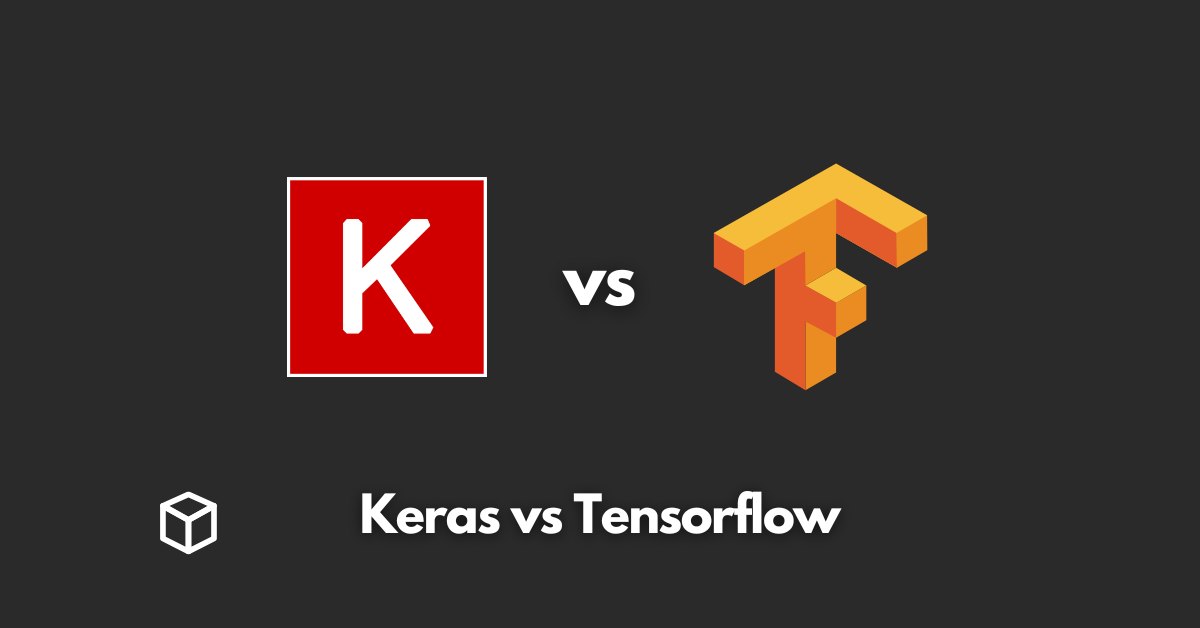Keras and TensorFlow are two of the most popular deep learning frameworks in use today.
Both are open-source and widely used in the machine learning community, but they have different strengths and weaknesses.
In this article, we’ll take a closer look at each framework and compare them to help you decide which one is the best fit for your project.
Keras
Overview of Keras
Keras is a high-level neural networks API, written in Python. It runs on top of other deep learning frameworks, such as TensorFlow and Theano.
Keras was developed to make it easier for researchers and developers to experiment with different types of neural networks.
Advantages of Using Keras
- Easy to Use and Understand: Keras has a simple and intuitive API, making it easy for beginners to get started with deep learning.
- High-Level API: Keras provides a higher-level API for building and training neural networks, which makes it a great choice for prototyping and experimentation.
- Support for Multiple Backends: Keras can run on top of several deep learning frameworks, including TensorFlow, Theano, and Microsoft Cognitive Toolkit (CNTK). This means you can use the same codebase for different projects, depending on the backend you choose.
Use Cases for Keras
- Deep Learning for Computer Vision: Keras is a popular choice for building and training neural networks for image classification, object detection, and other computer vision tasks.
- Natural Language Processing: Keras is also used for natural language processing tasks, such as text classification and sentiment analysis.
- Time Series Forecasting: Keras can be used to build and train neural networks for time series forecasting, such as stock market predictions.
TensorFlow
Overview of TensorFlow
TensorFlow is an open-source software library for dataflow and differentiable programming across a range of tasks.
It is a low-level library for building and training neural networks, which can be used with a high-level API like Keras.
TensorFlow was developed by Google Brain team and is now used by many organizations, including Google, Airbnb, and Intel.
Advantages of Using TensorFlow
- Large Community and Support: TensorFlow has a large and active community, which means you can find lots of tutorials, examples, and pre-trained models online.
- Flexibility and Customization: TensorFlow provides a low-level API for building and training neural networks, which gives you more control over the architecture and training process.
- Scalability and Performance: TensorFlow can be used to train large-scale machine learning models and also support distributed computing.
Use Cases for TensorFlow
- Training Large-Scale Machine Learning Models: TensorFlow is used to train large-scale machine learning models, such as Google’s Inception and ResNet.
- Distributed Computing: TensorFlow can be used to distribute the training process across multiple machines, which speeds up the training time.
- Reinforcement Learning: TensorFlow is also used for reinforcement learning tasks, such as training agents to play games like Go and chess.
Comparison of Keras and TensorFlow
Similarities between the two frameworks
- Both are open-source and widely used in the machine learning community.
- Both support deep learning and can be used to build and train neural networks.
Differences between the two frameworks
- Keras is a higher-level API, while TensorFlow is more
- low-level. Keras provides a simpler, more user-friendly interface for building and training neural networks, while TensorFlow gives you more control over the architecture and training process.
- TensorFlow has more advanced features and tools for customization. For example, TensorFlow provides a wide range of optimization algorithms and has support for distributed computing.
- Keras is more user-friendly, while TensorFlow is more powerful. Keras is a great choice for prototyping and experimentation, while TensorFlow is better suited for large-scale production projects.
Conclusion
In conclusion, both Keras and TensorFlow are powerful deep learning frameworks that are widely used in the machine learning community.
Keras is a high-level API that is easy to use and understand, making it a great choice for prototyping and experimentation.
TensorFlow is a low-level library that provides more control over the architecture and training process and is better suited for large-scale production projects.
Ultimately, the choice between the two frameworks will depend on your specific use case and the level of control and customization you need.
Recommendations for choosing between Keras and TensorFlow
If you’re new to deep learning and looking for a simple and user-friendly framework, Keras is a great choice.
If you’re working on a large-scale production project and need more control over the architecture and training process, TensorFlow is the better option.
Future developments and updates for both frameworks Both frameworks are actively developed and updated, with new features and tools being added regularly.
TensorFlow has recently introduced TensorFlow 2.0 which has a lot of new features and improvements like Eager execution and the integration of Keras in the core library.
While Keras has also been updated to support Tensorflow 2.0 and also has added support for new layers and models like transformer and attention mechanisms.
So, both frameworks are expected to continue to improve and evolve in the future.




